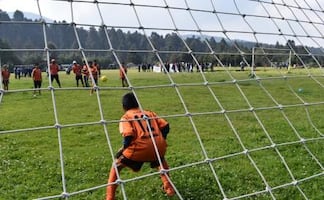Leer en español
Carlos Frenk Mora
says that “ finding some of the first galaxies that formed in our universe, orbiting in the Milky Way, is the astronomical equivalent to find the remains of the first human that inhabited the Earth".
The scientist graduated from the UNAM and now lives in the US. He published an article , "The footprint of cosmic reionization in the luminous function of galaxies", in The Astrophysical Journal.
Frenk Mora
and his team identified the galaxy populations that orbit around our galactic neighborhood using modeling computer systems.
The expert pointed out that the ancestral galaxies are: Segue-1, Bootes I, Tucana II and Ursa Mayor I, which are over 13 million-years-old . "What we did was collect all the data and interpretations in the scheme of the evolution of the Universe," the Mexican scientist explained.
"The finding supports the actual model of the evolution of the universe, the so-called Lambda Cold Dark Matter Theory , in which the elementary particles that make up dark matter drive cosmic evolution," he added.
The first discovery includes galaxies that formed during the dark cosmic era . The second , brighter objects that formed hundreds of millions of years later, once the hydrogen ionized by the intense ultraviolet radiation emitted by the first stars, it could have cooled down into massive dark materials.
Surprisingly, the team discovered that a theoretical model of galaxy formation that they had previously developed coincided with the data, which allowed them to infer the time for galaxy formation.
A decade ago, the weak galaxies near the Milky Way had been discarded from studies, but with the new scientific equipment, they have been revealed as “a new treasure to learn about the primitive universe”, added the expert.
Alis Deason
, from the Institute for Computational Cosmology Durham University, England , and Sownak Bose , from the Harvard-Smithsonian Center for Astrophysics, United States also participated in the project.
gm
Noticias según tus intereses
[Publicidad]
[Publicidad]















